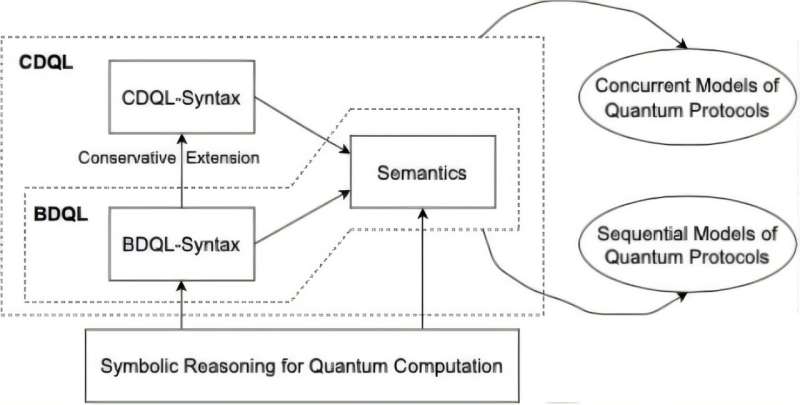
December 19, 2024 by Japan Advanced Institute of Science and Technology
Collected at: https://phys.org/news/2024-12-advancing-trustworthy-quantum-era-approach.html
Quantum computing offers the potential to solve complex problems faster than classical computers by leveraging the principles of quantum mechanics. Significant advancements have been made in areas, such as artificial intelligence, cryptography, deep learning, optimization, and solving complex equations.
While major technology companies like IBM, Google, and Microsoft are working toward practical quantum computers capable of handling larger quantum information, significant challenges remain before quantum technology can be widely adopted.
Although quantum communication and cryptography are increasingly used in commercial applications owing to their secure systems, quantum communication and cryptography must undergo rigorous verification for use in security-critical applications. These processes are essential to ensure no lapses in safety or security.
To address this gap, Assistant Professor Canh Minh Do, along with Associate Professor Tsubasa Takagi and Professor Kazuhiro Ogata from the Japan Advanced Institute of Science and Technology (JAIST), Japan, developed an automated approach to verify quantum programs based on Basic Dynamic Quantum Logic (BDQL).
BDQL faithfully captures quantum evolution and measurement in quantum mechanics, providing a logical framework to formalize and verify quantum protocols with their desired properties. Despite its effectiveness, BDQL had limitations, particularly its inability to handle interactions between participants in quantum protocols.
To overcome these limitations, the team has now developed a new logic known as Concurrent Dynamic Quantum Logic (CDQL), which extends BDQL’s capabilities to handle concurrency in quantum protocols.
In their study published on Dec. 12 in ACM Transactions on Software Engineering and Methodology, Dr. Do explains, “CDQL effectively formalizes concurrent behaviors and communication between participants in quantum protocols.
“Our logical framework also provides a transformation from CDQL models to BDQL models, ensuring compatibility with BDQL semantics, and introduces a lazy rewriting strategy for fast verification.”
This advancement not only enhances the expressiveness of the logic but also speeds up the verification process, making it applicable to a wider range of verified practical quantum applications.
One of the major advantages of CDQL over BDQL is its ability to handle concurrent actions. While BDQL was limited to sequential actions, CDQL can model quantum protocols that require multiple actions to occur concurrently, making it better suited for real-world problems.
Additionally, the framework provides a lazy rewriting strategy to improve the efficiency of the verification process. Concretely, this strategy eliminates irrelevant interleavings from earlier stages and reuses results to avoid needless computations.
This enhances the speed and scalability of verifying quantum protocols. Despite its advantages, our framework has some limitations, such as its inability to handle quantum data sharing over quantum channels. However, Dr. Do and his team plan to resolve this constraint in the future to increase CDQL’s versatility.
To improve the modeling and verification of quantum protocols, the CDQL has been developed as an extension of BDQL. The research team has successfully formalized and verified various quantum communication protocols in both BDQL and CDQL.
“Our automated formal verification approach, using both BDQL and CDQL, provides a rigorous framework for verifying both sequential and concurrent models of quantum protocols. This contributes to the reliability of foundational technologies such as quantum communication, quantum cryptography, and distributed quantum computing systems,” explains Dr. Do.
This work highlights the importance of ensuring the correctness of quantum protocols before they are deployed in critical applications.
In conclusion, CDQL is more effective than BDQL for formalizing quantum protocols with concurrent actions.
“This work introduces an automated approach using CDQL to verify the correctness of quantum protocols, ensuring their reliability before deployment in safety-critical and security-critical applications,” concludes Dr. Do.
He further adds, “By ensuring the correctness of quantum protocols, this work contributes to the development of reliable, bug-free quantum technologies, particularly in quantum communication and cryptography, over the next five to 10 years.”
This study represents a significant advancement in the formal verification of quantum protocols, contributing to the reliability, security, and practical applicability of quantum technologies.
More information: Canh Minh Do et al, Automated Quantum Protocol Verification Based on Concurrent Dynamic Quantum Logic, ACM Transactions on Software Engineering and Methodology (2024). DOI: 10.1145/3708475

Leave a Reply